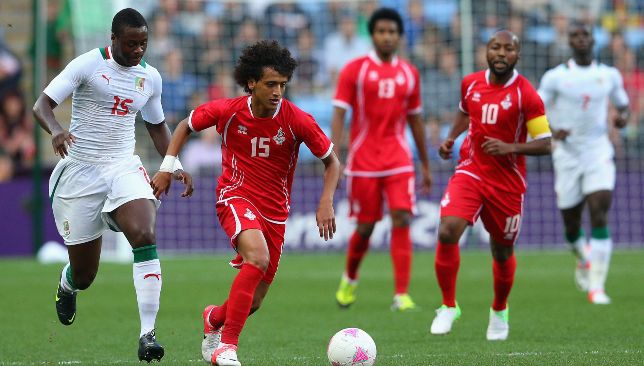
Thoughts about a new ‘Golden Generation’ being forged are at the forefront of UAE minds when the scrap for a spot at the Tokyo 2020 Olympics intensifies this month in Thailand.
From the 16 competitors at the 2020 AFC U-23 Championships, from January 8-26, three qualifiers will emerge. If Maciej Skorza’s starlets make the semi-finals, they will repeat the historic antics of Mahdi Ali’s London 2012 vintage.
This hallowed group would also go on to win the 2013 Gulf Cup, finish third at the next edition and make the semi-finals of the 2015 and 2019 Asian Cups.
But what happened to the pool of youngsters who excelled eight years ago in honourable defeats to tempestuous Luis Suarez’s Uruguay (2-1) and hosts Great Britain (3-1), plus claimed a creditable 1-1 draw with Senegal? Here’s the answer:
GOALKEEPERS
Ali Khaseif
Then: A key component of the Al Jazira side that swept to the Arabian Gulf League’s crown in 2010/11 and the man expected to don the No1 jersey for the senior UAE side for a decade to come. Started first two Group A games in the United Kingdom.
Now: Persistent injuries and issues with fitness saw Khaseif gradually lose his hold on the No1 jersey. He didn’t make the 2015 Asian Cup and was on the bench four years later on home soil, although his astounding defiance versus Real Madrid at the 2017 Club World Cup went viral.
Khalid Essa
Then: Very much trapped in Khaseif’s shadow at Jazira, although he had made 12 AGL starts in 2011/12 because of the No1’s injury issues. Handed a start in the dead rubber versus Senegal.
Now: A summer 2013 transfer to Al Ain helped Essa’s talent blossom. He was the first pick from after the 2015 Asian Cup to this winter’s Gulf Cup, although appears to have been usurped by Al Wahda prodigy Mohamed Al Shamsi. His deciding penalty save versus Copa Libertadores holders River Plate at the 2018 Club World Cup was a momentous moment in UAE football’s history, teeing up a final run-out versus Madrid.
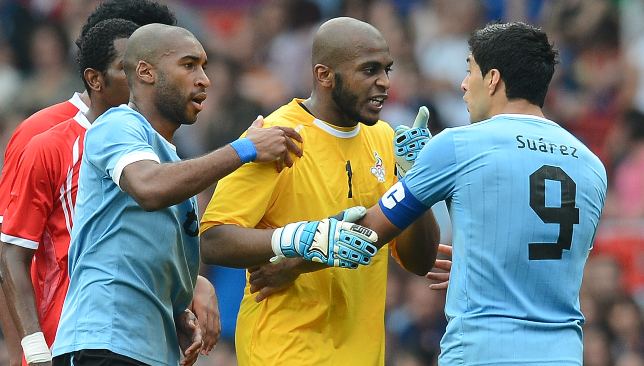
Ali Khaseif.
DEFENDERS
Abdulaziz Haikal
Then: Clear first-choice pick at right-back, possessor of several senior caps and already snapped up by Al Ahli for a big fee from Al Shabab. Started first two fixtures at London 2012, before dropping out with injury.
Now: Thrust back into the UAE set-up, after more than a year away, for this month’s training squad selected by new boss Ivan Jovanovic. Had previously been usurped at national level by Mohamed Ahmed, although won succession of domestic trophies at Ahli and competed in 2015 AFC Champions League final.
Mohamed Ahmed
Then: A starter in all three matches at London 2012 and emerging option at centre-back for the seniors.
Now: Al Ain became the Shabab youth product’s new home after the tournament. He’d grow into an accomplished right-back, with only a series of serious injuries hampering progress for club and country. These issues saw him miss out on much of Al Ain’s run to the 2016 AFC Champions League final, where they lost to South Korea’s Jeonbuk Hyundai Motors.
Saad Surour
Then: Substitute centre-back for both the UAE U-23s and Al Ahli. Replaced injured Haikal versus Great Britain.
Now: Featured rarely for Ahli, since flitting between Bani Yas and Al Wasl. Now competing for First Division League’s Emirates Club. Last represented the UAE in September 2013’s friendly with Trinidad and Tobago.
Hamdan Al Kamali
Then: A glittering star in the Wahda ranks and buoyed with experience earned on loan at French giants Lyon, where he featured for the reserves. Started all three matches in the UK.
Now: Suspect mentality and fitness problems have witnessed the centre-back not come close to fulfilling the potential exhibited at the start of his career. Bit-part player in 2013 Gulf Cup success and run to third at 2015 Asian Cup.
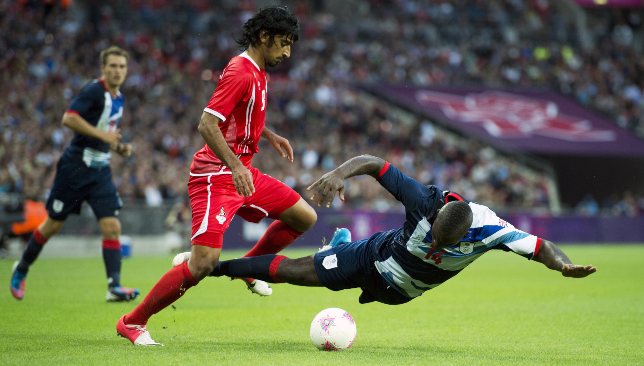
Hamdan Al Kamali.
Ali Al Ameri
Then: A physical option in defence, although an unused substitute at the tournament.
Now: A curious career path witnessed the now 30-year-old flit between Al Jazira, Al Nasr and Bani Yas, prior to 2018’s remarkable stint at Blyth AFC of English football’s 10th tier.
Abdelaziz Sanqour
Then: Had been snapped up by big-spending Ahli from Sharjah in the run-up to the tournament, in which he started all three matches at left-back.
Now: Grew into a key component of Ali’s senior side and an ultra-reliable option for Ahli. Debilitating injury, however, last witnessed him kick a ball for the new Shabab Al Ahli Dubai Club in December 2017.
MIDFIELDERS
Ismail Al Hammadi
Then: Al Hammadi was an obvious pick for one of three over-age slots – along with Khaseif and Ismail Matar. A flying winger who was about to enter his prime years with Ahli.
Now: An undisputed legend of the Emirati game would emerge. Al Hammadi has raced past 100 caps and starred in successive runs to the Asian Cup semi-finals (2015-19).
Mohammed Fawzi
Then: A trusted foot soldier for Ali, confident and competent at both right wing and right-back. Was an unused substitute in the opening two matches and then benefited from Haikal’s injury to start versus Senegal.
Now: Back in the UAE fold under Jovanovic after he was ignored by Bert van Marwijk and admonished by Alberto Zaccheroni. At club level, could not unseat Mohamed Ahmed at Al Ain from 2014-16. Crucial performer when Jazira lifted the 2016/17 AGL.
Omar Abdulrahman
Then: Amoory was Middle East football’s hidden gem. His, seemingly, unlimited talent at playmaker promised to carry Al Ain and the UAE to grand successes. Created gasps of elation when his ability was revealed to a global audience versus Uruguay. Ended competition with two assists from three starts.
Now: Work-permit problems would cancel a post-tournament move to Manchester City to begin a theme of aborted moves to Europe. Enraptured a continent in Australia at the 2015 Asian Cup and won the 2016 AFC Player of the Year. August 2018 saw time called on a trophy laden decade at Al Ain, but the subsequent switch to Saudi Arabia’s Al Hilal was bedevilled by a devastating knee injury. Back in the UAE with Jazira, yet nowhere near back to his best. Did he truly fulfill his talent?
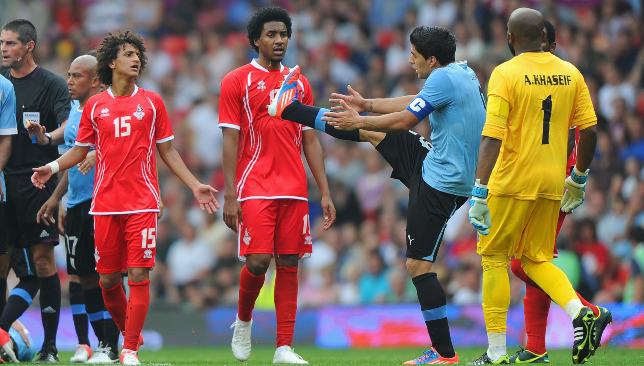
Omar Abdulrahman (l).
Rashed Essa
Then: Dubai’s answer to the majestic Amoory and a beacon of hope for troubled Al Wasl. Showed great composure to produce a sublime solo goal against Great Britain and an audacious no-look pass put Matar through for the opener versus Senegal. World was his oyster.
Now: Essa represents the saddest of football tales – unfulfilled talent. Barely kicked a ball since 2014’s switch to Al Ain, missed the entire 2018/19 campaign and has played once for whipping boys Khor Fakkan in 2019/20.
Amer Abdulrahman
Then: A centre midfielder who played in a style that belied his youth. Utterly composed in whatever company he was thrust into, starting all three matches at the Games.
Now: GCC Champions League glory with Bani Yas would help earn an abortive trial at – then – Premier League-outfit Blackburn Rovers in summer 2013. This spell, however, would represent the high point of his career. Successive serious injuries hindered a stint at Al Ain from 2016-19, while also stopping him making an impression at Jazira.
Khamis Esmail
Then: An emergent force in UAE football since his switch, a year prior, from Emirates Club to Jazira. His rare combination of strength and poise made him a lock at defensive midfield in all three London 2012 fixtures.
Now: Time has started to close in on a remarkable career. An enormous fee took him from Jazira to Ahli in January 2016, though a succession of knee problems would continue chipping away at his abilities. The last of more than 70 international caps was earned at the 2019 Asian Cup. He’d previously been with his nation at every juncture.
Habib Fardan
Then: Nasr knew they had a jewel on their hands in box-to-box midfielder Fardan. Then Blue Wave boss Walter Zenga raved about a dynamic starlet who would be an option off the substitutes’ bench against Great Britain and Senegal.
Now: Fardan would go on to achieve notable things, not least a huge switch to Ahli in summer 2014. Yet, he wouldn’t stamp his name on that club or the UAE. The role of bit-part player would remain his. Now back at Nasr and intermittently in the Whites squad.
FORWARDS
Ahmed Ali
Then: A true favourite of coach Ali, despite a poor scoring record in the Arabian Gulf League. This kept him ahead of Ali Mabkhout in the race to make substitute appearances in the first two matches.
Now: Much of the same. His high point of four strikes in 25 AGL matches came at Al Dhafra in 2015/16. Still managed to rack up a number of senior caps, though overlooked for major competitions.
Ismail Matar
Then: Matar was already a living legend – and London 2012 only enhanced it. His wisdom and innate ability made him a lock for an over-age spot. The 2007 Gulf Cup hero then opened the scoring against Uruguay and Senegal.
Now: Was still called on by the UAE at January 2019’s Asian Cup as their elder statesman. This made up for the hurt of missing out four years prior. Has also continued to be a regular presence at Wahda well into his mid-30s. What a player.
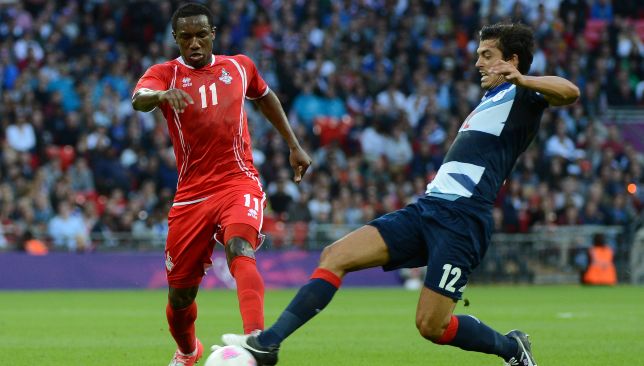
Ahmed Khalil.
Ahmed Khalil
Then: The young gun at the head of the UAE’s attack. His frightening power and ability to shine on the grandest stage had carried them past Uzbekistan during qualifying, his brace proving essential in the Tashkent epic. Failed to net in London, however, but was a lock in the XI.
Now: Made history in 2015 when he became the UAE’s first-ever AFC Player of the Year. This came on the back of Ahli’s scintillating run to that year’s Champions League showpiece. Would also be the global joint top scorer in World Cup 2018 qualifying on 16 goals, alongside Poland’s Robert Lewandowski and Saudi Arabia’s Mohammed Al Sahlawi. There are, however, some frustrations. Has struggled with conditioning and the demands of being a regular scorer at club level. This can only take some of the shine off his achievements.
Ali Mabkhout
Then: A bit-part player for club and country. Failed to make the bench for the first two games and was handed the final 25 minutes versus Senegal.
Now: Well, it’s fair to say Mabkhout has gone on to have a memorable career. His hat-trick versus Indonesia in October witnessed him become the UAE’s all-time-leading marksman. Further goals in miserable World Cup 2022 qualifying and the 24th Gulf Cup has put him on an outstanding 60 goals in just 83 caps. Has also brutalised domestic defences with Jazira, plus been top scorer at the 2015 Asian Cup. The only frustration is a failure to build on regular talk of a switch to Europe.